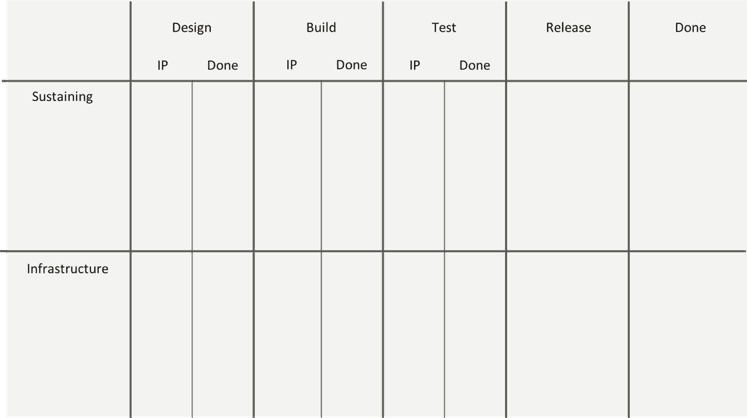Kanban Misconception: Kanban is Only a Board
Jenny Stuart
Construx VP of Consulting
Many people think Kanban means using a simple board with To Do, Doing, and Done columns. For a single person managing his or her work alone, a board that simple is appropriate. For a team of people, the board needs to their work and workflow. What steps and stages does the work move through?
For example, an operations team that does both keep-the-lights on sustaining work as well as creates new infrastructure to support a system might have a board like the following:
There is great value in understanding and visualizing the work of a team, program, or portfolio. However, you leave a lot of opportunities to optimize value delivery if you stop there.
Beyond establishing a board, I recommend teams:
- Set explicit work in progress (WIP) limits to implement what’s known as a “pull” system—a work item is moved to the next stage only when there is capacity in that next stage for the work. WIP limits help unburden individuals and improve flow by having an amount of work in the system that optimizes cycle time. Cycle time is the time from when the work enters the first column until it’s complete
- Set policies for the system. At a minimum, consider stage exit or entry criteria make it clear what needs to occur before work is considered done. Beyond that, there can be policies related to the overall board.
Kanban includes Kanban boards, but it is much more than that.


